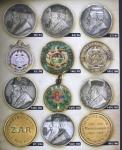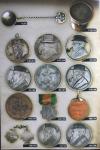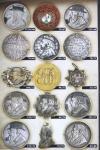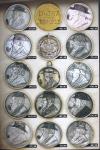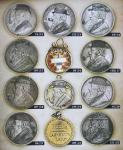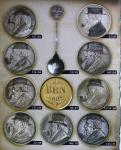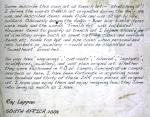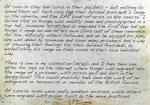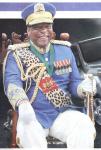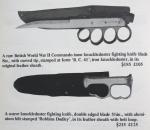-
Posts
13,225 -
Joined
-
Last visited
-
Days Won
22
Content Type
Profiles
Forums
Blogs
Gallery
Events
Store
Everything posted by Mervyn Mitton
-
This lengthy post could have gone equally well on the Coins and Medallions Forum - however, it is unique to Sth. Africa. The author of the booklet - Ray Leppan - lives in Johannesburg and has a big collection of these coins. He has had this booklet published and has given me permission to show it on GMIC. The Boer War lasted from 1899 to 1902 and was in two main phases. Until the end of 1900 it was very much a conventional war. The Boers started with both a uniformed Force and also the Commandoes. Initially, they were very succesful and we had many men and resources tied up in the sieges they had started on main towns. They were - at that time quite capable in putting an army in the field in excess of 6 or 7000 men. However, as our army was reinforced the tide changed and they lost the ability to fight as large units. This should have been the point where a peace was sorted out - however, many of their leaders were not in favour of this. Kruger had fled to Holland and the Commandoes decided to fight on - using the 'hit and run' tactics that their name implies. This was unfortunate for both sides and led to a lot of the bitterness that persisted for years after the War was concluded. One of our problems was that to guard large numbers of prisoners was very difficult - the man power at that time was just not available. We did though have our Empire and a number of Countries were brought into use as Prisoner of War camps. These were guarded by British troops of the Countries garrisons. We used India, Ceylon, Barbados and St. Helena. The prisoners were allowed small knives and were allowed to use local materials to create items for when they returned home to S.A.. Brooches and jewellery were very popular - pipes - cups - even chairs. They nearly always have the old Boer coat of arms and some are really beautifully worked. We used to see a lot of them - however, their numbers are limited and the US seems to have taken a collecting interest in them. One item that the prisoners had on them were coins - which the British had produced for the Boer Republic between 1892 and 1898. These are now valuable in their own right - however, for the Boers they had a fascinating reminder of their home - President Kruger's head on one side and on the obverse - the Republic's coat of arms. Kruger was known for wearing a tall silk top hat and for smoking a down curved Meershaum pipe. These were not shown on the coins - but the men liked to carve them into the silver of the coins. They also carved out the coins - in fact some of their work - with only a penknife is quite amazing. Ray Leppan has made a collection of these carved coins and they are very rare. We have had them-in , but I've never seen so many variations. So, herewith - his introduction to his booklet and the pages of coins. You will note that whilst Boer coins, several have British Regts. names or Insignia - obviously done by the British Guards !
-

SAS Wings...
Mervyn Mitton replied to Chris Boonzaier's topic in Great Britain: Militaria: Badges, Uniforms & Equipment
Gareth - welcome to GMIC. That is an interesting identification - and only someone with knowledge on the subject could be so sure. For the benefit of members could you please give us a few pointers on these wings. Many thanks. Mervyn -

Moderators Choice Peninsular GSM?
Mervyn Mitton replied to Spasm's topic in Great Britain: Orders, Gallantry, Campaign Medals
Brilliant - the research has really paid off. I think the great thing is that you have a direct link to the family. Look forward to hearing about new things you find out. Mervyn -

1850's French Heavy Cavalry Sword
Mervyn Mitton replied to Mervyn Mitton's topic in Swords & Edged Weapons
Thankyou - some interesting info.. I fully agree now that it is a French Inf. Officer's sword of the 1840's. Mervyn -
Following on from the picture of the Zulu King Zwelethini in ceremonial leopard skinshown above - this was in this morning's paper and shows him in a Western style uniform. Without being disrespectful, this is what happens when a clothes designer is asked to create a unifom that has never been in existance. The large ZAG in gold embroidery - I can only think this stands for KwaZulu Govt. - but he is of course not part of the Govt.. The cross band - made from yet another unfortunate Leopard is representing a ribbon as on a British Order. The Arms are for Natal. There is an abundance of gold thread and the sword looks like a British General's pattern. However, it is the set of five medals - with identical ribbons - that always cause the most amazement ! I think each one depicts a previous King - so, presumably, they have created an order which can be awarded ? However, there is a veil of secrecy about the whole thing.
-

Fighting Knife Badges
Mervyn Mitton replied to Tracy's topic in Great Britain: Militaria: Badges, Uniforms & Equipment
-

Fighting Knife Badges
Mervyn Mitton replied to Tracy's topic in Great Britain: Militaria: Badges, Uniforms & Equipment
Tracy - I will make this the definitive page for answering your question on the lapel pin. This - as we thought - is of a British pattern commando fighting knife - used in the Middle East. This is shown by the up-swept blade. Arab daggers tend to have this shape as they stab under the ribcage to reach the heart. The purpose of the lapel pin would have been to identify members of the commando when not in uniform - or, perhaps as old comrades when they were discharged. We had three patterns of commando knives with knuckledusters and the US had two. However, you must remember that the Fairburn Sykes was the standard commando dagger and did not have attachments. -

RN WWII C.G.M. on ebay
Mervyn Mitton replied to jeffskea's topic in Great Britain: Orders, Gallantry, Campaign Medals
At the end of the day, I don't think any of you know how serious the laser changing of important medals has become. Only the experts can really tell the difference - and then with difficulty. The other question - why, of all places, pick ebay for such an expensive item. Since the naming is known at a main auction there can be no doubt this is a copy - and ebay should be advised. Mervyn




